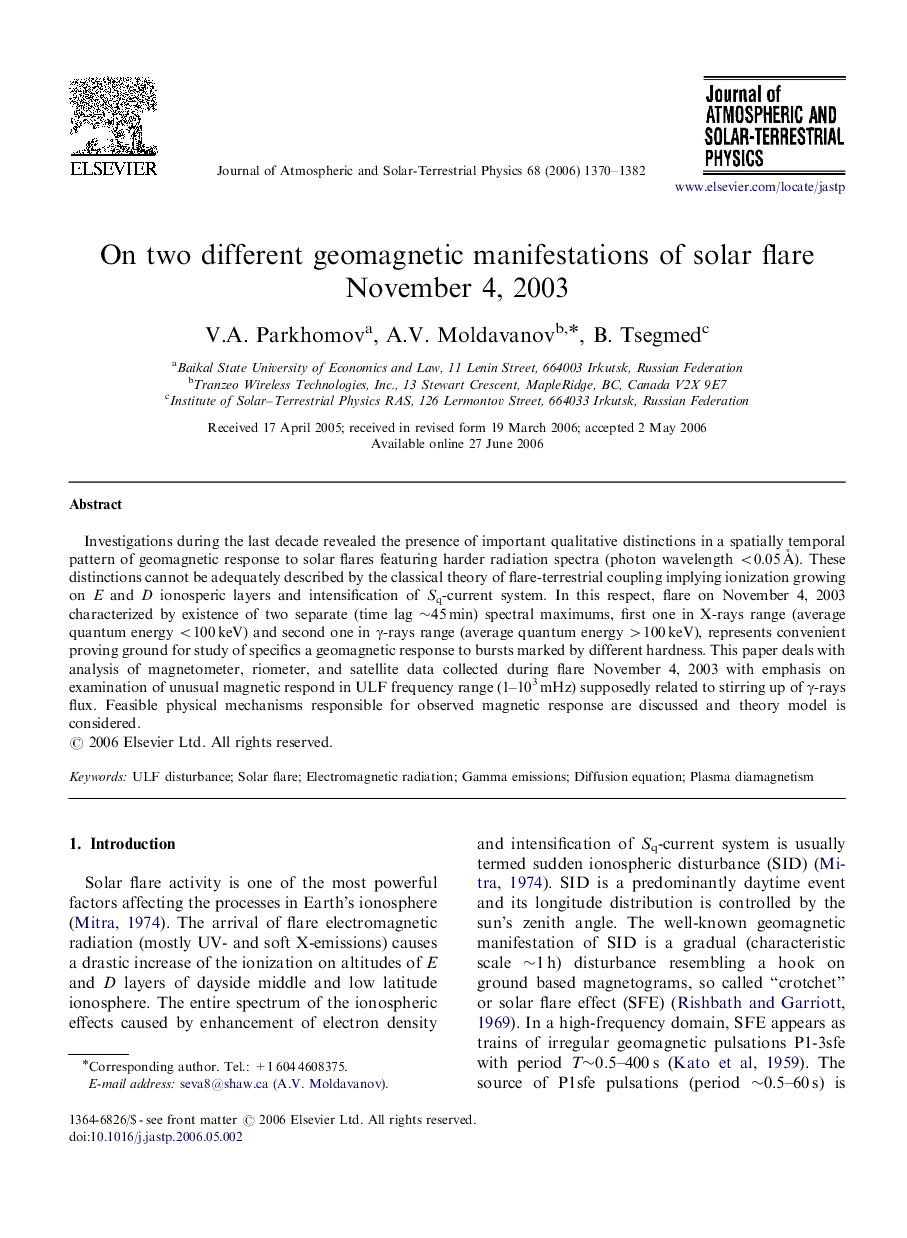| Article ID | Journal | Published Year | Pages | File Type |
|---|---|---|---|---|
| 1778419 | Journal of Atmospheric and Solar-Terrestrial Physics | 2006 | 13 Pages |
Abstract
Investigations during the last decade revealed the presence of important qualitative distinctions in a spatially temporal pattern of geomagnetic response to solar flares featuring harder radiation spectra (photon wavelength <0.05Â Ã
). These distinctions cannot be adequately described by the classical theory of flare-terrestrial coupling implying ionization growing on E and D ionosperic layers and intensification of Sq-current system. In this respect, flare on November 4, 2003 characterized by existence of two separate (time lag â¼45 min) spectral maximums, first one in X-rays range (average quantum energy <100 keV) and second one in γ-rays range (average quantum energy >100 keV), represents convenient proving ground for study of specifics a geomagnetic response to bursts marked by different hardness. This paper deals with analysis of magnetometer, riometer, and satellite data collected during flare November 4, 2003 with emphasis on examination of unusual magnetic respond in ULF frequency range (1-103 mHz) supposedly related to stirring up of γ-rays flux. Feasible physical mechanisms responsible for observed magnetic response are discussed and theory model is considered.
Related Topics
Physical Sciences and Engineering
Earth and Planetary Sciences
Geophysics
Authors
V.A. Parkhomov, A.V. Moldavanov, B. Tsegmed,
